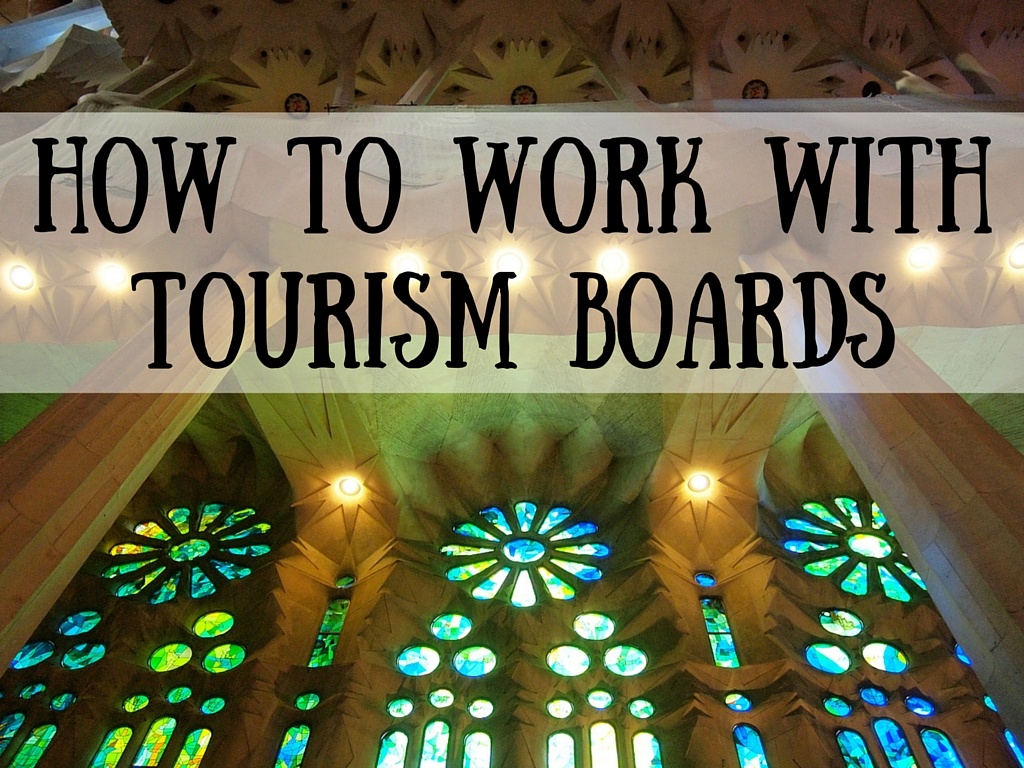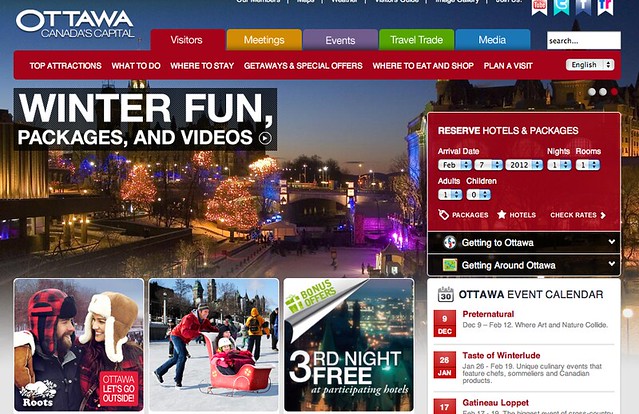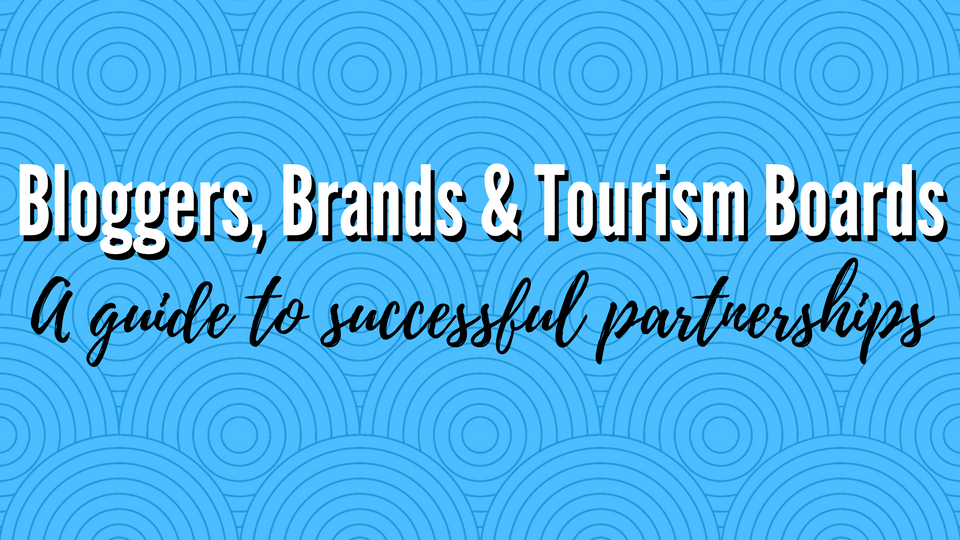How to Work with Tourism Boards

Despite the fact that I realize not everyone will be interested in this subject, I still feel like it's a topic worth addressing. More and more recently, I've been fielding questions from bloggers and non-bloggers alike about how I manage to work with tourism boards and companies when I travel.
Using a 2012 trip to Ottawa as an example (where I worked with both Ottawa Tourism and the HI Ottawa Jail Hostel), here are some answers to common questions I've received about working with tourism boards.

Common questions about my sponsored travels
(Note: This is not a post about “how to get invited on press trips” or “how to score free stuff when you travel.” If that's what you're here to find, you can navigate away right now!)
“How do I know when my blog is “big enough” to pitch to companies/tourism boards?”
The truth is (and I know this isn't what any blogger wants to hear), there's no “magic number” when it comes to knowing when it's the right time to start pitching. If you send the right pitch to the right company/tourism board, things like page views and RSS subscribers and Twitter followers won't really matter much.
In general, though, you want to be able to show that you have an engaged audience — regardless of how big it is. In my mind, a solid, small engaged audience is much more valuable than a large, indifferent one. My audience is by no means huge, but I've been able to encourage a lot of discussion and engagement on both my blog and social networks, proving that I'm not just writing all of this for myself. People actually read what I publish and respond to it, and Ottawa Tourism hinted that this was the main reason they decided to work with me.
But how do I build an engaged audience?, you ask. Well, the key to an engaged audience is content. It really is true that content is king. Before you start thinking about pitching to tourism boards and companies, build up a solid blog with top-notch content. Know what your niche is (if you plan to have one), and what you want the tone of your blog to be. And, above all, let your voice and personality shine through — this is what truly will grab the attention of tourism boards.
“How do I go about pitching?”
So you think you've developed your blog and audience enough to where you feel confident pitching to a company or tourism board. What's next? Here are my main tips for before you pitch, and for actually drafting the pitch itself.
Before you pitch:
- Know what you ideally want. You obviously have to first know where you're going (and when) and then you need to figure out more or less what you're going to ask for. Do you want all your expenses covered or just one specific part of your trip? Are you hoping for a fully comped tour or would you be happy with a media discount? Figure this out before you even think about pitching.
- Know what you can offer in return. Almost as important as knowing what you want, you should know what you can offer a company or destination in return. What value can YOU offer THEM? Why are you a good fit for their brand or destination? How much coverage will they get from working with you, and who is going to see that coverage?
- Figure out who to pitch to. The next step is figuring out who to pitch to. Do a bit of detective work on the company or destination's official site or social media accounts. If they have a media contact listed, that's who you should pitch to. If you can avoid sending your pitch to a generic “info” e-mail address, do.
- Keep in mind the time of year you'll be traveling. Will you be traveling to a destination during their high season or in the off-season? If you're traveling during high season (or around a popular event), send your pitch as early as possible. A tourism board might not be able (or willing) to accomodate you at the last minute. Since I was traveling to Ottawa in the dead of winter, I was fine contacting Ottawa Tourism a mere 3 weeks before my trip. But I wouldn't recommend waiting so long if you can help it.

Drafting your pitch:
- Introduce yourself completely (including who you are and who your audience is). Don't be vague. Be confident in yourself and your blog, and give a sense of who reads what you publish.
- Tell them when you'll be there (be specific). Especially if you are hoping to get a sponsored tour or have your hotel/hostel stay covered, you will need to know the exact dates you'll be traveling. If you don't have your dates chosen yet, you probably aren't ready to send a pitch.
- Be clear with your request, but also flexible. Above I mentioned that you should know what you ideally want before drafting your pitch. I still recommend this. But you don't want to come off as demanding on entitled in your pitch. So lay out what you would like to receive, but also be flexible in your request.
- Provide stats, but expect them to do their own homework, too. I usually include my main stats in a short paragraph to sum up the size of my blog's audience, whether it's asked for or not. But I know for a fact Ottawa Tourism checked out all of my social networks on their own, too. So don't inflate those numbers too much.
- Make your pitch professional, but still use your voice. When drafting your pitch, you want to make it more formal that something you'd post on your Facebook wall, but not so stuffy that it doesn't reflect your personality. This is your chance to sell yourself — do yourself justice.
- Send a media kit. I highly recommend putting together a media kit for yourself that you can send out to potential partners. In this kit, you can go into more depth about your audience, your stats, and what you can offer. I also include testimonials in mine, proving that what I write actually inspires others to travel to certain destinations or spend their money with certain companies.

Want to see some sample pitches? Check out my course on partnerships for detailed examples!
“Should I just pitch to everyone?”
The short answer is no. This is not just about “scoring free stuff,” no matter how appealing that idea is. Before you think about sending out a pitch, educate yourself about the destination or company you're considering. Will it fit in with the rest of your blog's content? Is it in line with what your audience is interested in?
Not every destination, company, or tourism board will be a good fit for your blog and audience. And that's okay. The bottom line is, don't send out pitches just to send them out.

“But what if they say no?”
If you're afraid of rejection, I have some bad news — you probably will get rejected. Other times you may never get a response to your pitch. But who cares? You shouldn't be planning your travel counting on free trips anyway.
You'll learn more with each pitch you write and with each sponsorship you secure. Don't look at rejection or being ignored as a bad thing — look at it as a learning opportunity.
Here are my tips for dealing with being ignored or rejected:
- Follow up on your pitch. If you haven't gotten a response to your pitch within a week, send a follow-up e-mail, or even give the contact a call if you have a phone number for them. It's very easy for e-mails to slip through the cracks, and many PR reps are extremely busy. A friendly reminder can't hurt; sometimes you just have to be both patient and persistent.
- Try again. Got rejected? Don't sweat it. There could be many reasons for receiving a rejection — maybe you weren't confident enough in your pitch; maybe they just don't have the budget to sponsor you; maybe you didn't get in touch soon enough. Regardless of the reason, just forget about it and try again somewhere else.
- Get more creative. If you're consistently getting rejected, maybe it's time to go back to the drawing board. Maybe your blog needs a makeover. Maybe you need to concentrate on building your audience and polishing your content for a while. Maybe you need a catchier pitch or media kit.
- Realize it might be them, not you. Sometimes it's all about the timing — timing you may not even know about. Maybe you sent your pitch when they had just run out of extra funds that month or year, or maybe your pitch got lost during restructuring in the company. Things happen, and you certainly can't control them all, or even prepare for them.

And, at the end of the day, some companies and tourism boards just don't “get it” yet. This whole blogging thing is fairly new, and not everyone has embraced the idea of treating bloggers like they would traditional media. Ottawa Tourism definitely sees the value in online media, but not all boards and companies I've approached do. Sometimes you just have to chalk it up to a loss and hope they'll come around eventually.
Because, despite the fact that not everyone “gets it” right now, bloggers really can offer companies and destinations a lot if sponsorships/partnerships are approached in the right way.
Learn more about working with brands/tourism boards
Curious to learn even MORE about working with travel brands and tourism boards?
If you liked this post, then you should check out the in-depth course I've created all about successfully pitching and working with travel brands and tourism boards.
Bloggers, Brands, and Tourism Boards: A Guide to Successful Partnerships consists of 29 lessons, expert interviews with bloggers and PR professionals, and worksheets covering everything from developing and pitching ideas to delivering and following up on effective campaigns. The course also includes best practices for working with brands and destinations, a detailed lesson on how to create a media kit, a LOT of sample pitches, and a look at social campaigns and brand ambassadorships and how to land them.

Amanda Williams is the award-winning blogger behind A Dangerous Business Travel Blog. She has traveled to more than 60 countries on 6 continents from her home base in Ohio, specializing in experiential and thoughtful travel through the US, Europe, and rest of the world. Amanda only shares tips based on her personal experiences and places she's actually traveled!












love this. Thank you!
This was very helpful! Thanks for sharing!
Thanks for this. After 2 1/5 years on the road and travel blogging, we are only just starting to look at contacting tourism boards. Your checklist is a great start for us to consider – even if it is a few years old now.
Do you have any new tips to consider?
I think all of this still remains true – though these days it’s even more important to try to build relationship before pitching, as PRs get SO many requests from bloggers now. You really need to emphasize why you’re the best fit!
Great tips Amanda! Thank you for sharing this interesting and useful info. Good job!
Such a great and informative post! Learned a lot from this! Thank you!
This was very helpful and I’m glad that I came across this blog post. We are couple bloggers from India and we cover only Indian places, food, culture, traditions, shopping destinations and so on. Basically everything India. Although, we are growing gradually we have no idea on how to approach the brands or tourism boards, but thanks to your post now we have some information to fall on.
Great post! Do you have any tips on what to write in the subject line to ensure your email gets opened? Would love to hear any advice you have!
It depends who/how you’re pitching (i.e. whether it’s someone you’ve already talked to before or whether you’re cold-pitching). But generally you want to mention that you’re a blogger/influencer, what you’re looking for, and when you’re visiting. For example: “Travel blogger visiting in April 2018” or “Possible influencer campaign in summer 2018” or something similar. This is something I cover in my blogger partnerships course. 😉
very informative post. thanks for sharing.
Thank you for these tips. As a newbie blogger, I found this article to contain a wealth of information.
This is brilliant! Thank you so much
Thank you Amanda for this excellent post… You have no idea how it helped me get it right when dealing with tourist boards. All the best! 🙂
This is EXACTLY what I was looking for!! Thank you for the useful information Amanda!!! <3
Happy to be able to help!